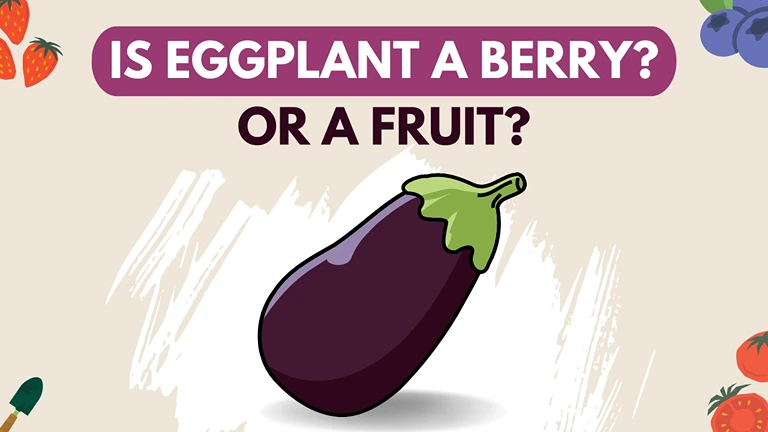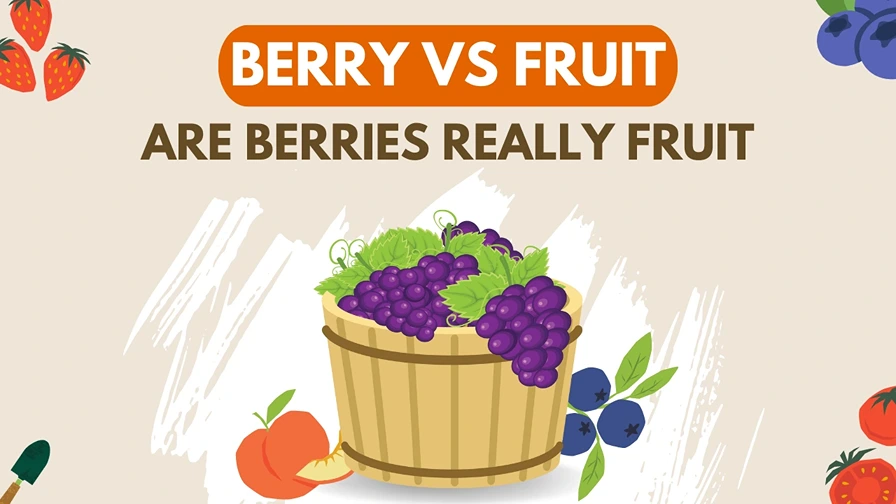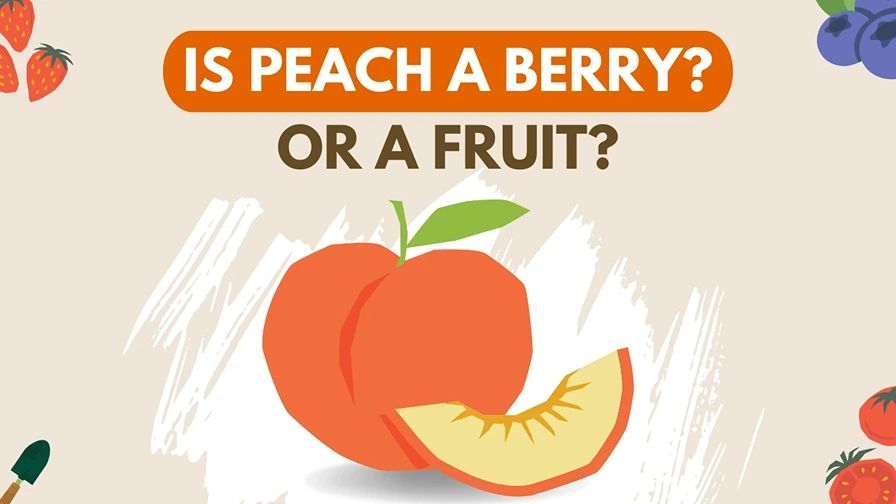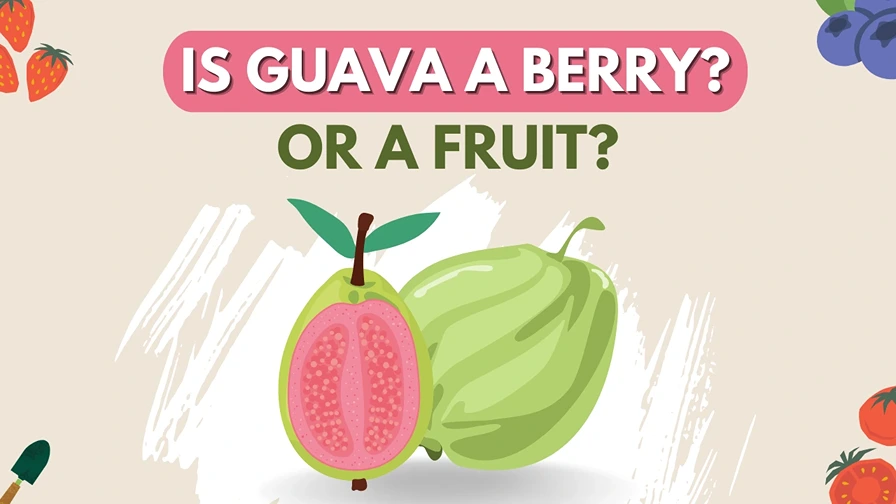When it comes to classifying fruits and vegetables, things can get quite interesting and even a little confusing. One such example is the eggplant. Is eggplant a berry? This is a question that has puzzled many curious minds.
For all curious minds: Yes, eggplant is a berry.
But why is eggplant classified as a berry but referred to as a vegetable?
Let’s explore the fascinating world of eggplants and uncover the truth behind their classification.
What Is An Eggplant?
Eggplant, scientifically known as Solanum melongena, is a popular fruit that belongs to the nightshade family, Solanaceae. Normally eggplant is considered as a vegetable due to its flavor and culinary uses.
It is a versatile and widely used ingredient in various cuisines around the world. Eggplants come in a range of shapes, sizes, and colors, including purple, white, and even striped varieties.
Historical Significance
The history of eggplant cultivation can be traced back thousands of years.
Originating in South Asia, eggplants have been cultivated and enjoyed in regions such as India, China, and the Mediterranean for centuries.
They have played a significant role in the culinary traditions of these cultures, with recipes and cooking techniques passed down through generations.
Physical Characteristics Of Eggplant
- Size and Shape: Eggplants typically have an oval or elongated shape, resembling a large egg, which is how they acquired their name. However, it’s worth noting that not all eggplants are egg-shaped; some may be round or cylindrical. The size of an eggplant can vary widely, ranging from a few inches to more than a foot in length, depending on the variety.
- Color and Texture: The most common and recognizable eggplant variety is deep purple in color, with smooth and glossy skin. However, there are other color variations available, such as white, green, and even purple and white striped. The skin of an eggplant is relatively thin and is often peeled or left intact based on personal preference or the recipe being prepared.
- Internal Structure: Cutting open an eggplant reveals its inner structure. The flesh of the eggplant is soft, spongy, and cream-colored. In the center, there are numerous small, edible seeds that are surrounded by the flesh. These seeds are generally bitter in taste and can vary in number depending on the size of the eggplant.
- Culinary Uses: Eggplants have a mild and slightly earthy flavor, making them a versatile ingredient in various culinary preparations. They can be cooked in different ways, including grilling, roasting, frying, and baking. Eggplants are commonly used in dishes such as baba ganoush, ratatouille, moussaka, and curries. Their unique texture allows them to absorb flavors and spices, making them an excellent addition to many recipes.
- Nutritional Profile: Eggplants are not only delicious but also offer several nutritional benefits. They are low in calories and fat, making them a suitable choice for those watching their weight. Eggplants are also a good source of dietary fiber, which aids in digestion and promotes a healthy gut. Additionally, they contain various vitamins and minerals, including vitamin C, vitamin K, vitamin B6, potassium, and manganese.
Let’s get into the intriguing question: Is an eggplant a berry or not?
Understanding Botanical Classification Of Eggplant
Before we delve into the classification of eggplant, it’s crucial to grasp the principles behind botanical categorization. Botanists use specific criteria to classify plants based on their characteristics, structure, and reproductive properties. These classifications provide a systematic approach to studying and understanding the vast array of plant species, vegetables, and the difference between berries and fruits.
Defining A Fruit
In botanical terms, a fruit is the mature ovary of a flowering plant. It develops after successful pollination and contains seeds. Fruits serve as a means of seed dispersal, ensuring the propagation and survival of plant species. While we commonly associate fruits with sweetness, not all fruits are sugary or consumed as such.
The Distinction Of A Berry
A berry, on the other hand, is a specific type of fruit with certain defining features. Botanically speaking, a berry is a fleshy fruit that develops from a single ovary and typically contains multiple seeds. Berries often exhibit a uniform texture and are juicy when ripe. They are characterized by their fleshy pericarp, which refers to the fruit’s wall.
- Single Ovary Development: As mentioned earlier, a berry develops from a single ovary of a flower.
- Fleshy Pericarp: Berries have a fleshy pericarp, which refers to the fruit wall.
- Multiple Seeds: One of the key features of berries is the presence of multiple seeds within the fruit.
Analyzing Eggplant’s Characteristics
To determine whether an eggplant falls into the category of a berry, we must closely examine its characteristics from a botanical perspective. Let’s consider some key aspects of an eggplant’s structure and composition:
- External Appearance: Eggplants have a soft, fleshy interior enclosed by tough outer skin. The skin may vary in color and can be smooth or slightly textured. When cut open, the flesh reveals a spongy texture and contains numerous small seeds.
- Internal Structure: When dissecting an eggplant, we find that it has a central cavity filled with seeds. The seeds are distributed throughout the flesh, rather than being concentrated in a specific region. This distribution is a crucial factor in determining the botanical classification.
- Analysis of Seed Distribution: In the case of eggplant, the seeds are dispersed uniformly throughout the fruit’s flesh. Unlike some fruits where the seeds are clustered in a specific area or confined to specific chambers, eggplant seeds are spread evenly throughout the entire fruit.
Is Eggplant A Berry?
Based on the botanical criteria discussed, we can now address the burning question: Is eggplant a berry?
The key characteristics that define eggplants as berries are:
- Development from a Single Ovary: Eggplants, like other berries, develop from a single ovary of the flower. After pollination, the ovary undergoes maturation and enlarges to form the fruit.
- Fleshy or Pulpy Ovary Wall: In the case of eggplants, the ovary wall becomes fleshy and pulpy as it matures, which is a defining characteristic of berries. The flesh of the eggplant, including the inner part surrounding the seeds, is derived from the ovary wall.
- Multiple Seeds: Inside an eggplant, you will find numerous small, edible seeds. These seeds are formed within the ovary and are distributed throughout the fleshy interior.
Given that a berry is defined as a fleshy fruit developing from a single ovary with multiple seeds, and eggplants possess all these features, it is accurate to classify eggplants as berries.
While the classification may come as a surprise to those accustomed to perceiving eggplant as a vegetable, the botanical definition sheds light on the true nature of this remarkable plant.
Other Examples Of Botanical Berries
Understanding that eggplants are berries might surprise some people who typically associate berries with small, sweet fruits. However, in botanical terms, there are many other examples of fruits classified as berries that don’t necessarily fit our preconceived notions. Here are a few examples:
- Tomatoes: Yes, tomatoes are technically berries! They develop from a single ovary, have a fleshy interior, and contain multiple seeds. The culinary classification of tomatoes as vegetables is based on cultural and culinary usage rather than botanical characteristics.
- Grapes: Grapes are familiar fruits that we often categorize as berries. In botany, they are indeed berries as they meet the criteria of a fleshy ovary wall and multiple seeds.
- Bananas: Bananas are another surprising example of berries. They develop from a single ovary and have a fleshy, pulpy interior. Unlike other berries, however, bananas have a protective peel.
- Cucumbers: While cucumbers may not be as sweet as other berries, they are classified as such due to their botanical characteristics. They develop from a single ovary and have a fleshy, seed-containing interior.
These examples demonstrate the wide diversity of fruits classified as berries, highlighting the importance of understanding botanical definitions.
Health Benefits Of Eggplants
Consuming eggplants as part of a balanced diet may contribute to overall health and well-being. Some potential health benefits associated with eggplants include:
- Heart Health: Eggplants are rich in antioxidants, particularly nasunin, which may help reduce the risk of heart disease by protecting against oxidative stress and inflammation.
- Blood Sugar Management: The dietary fiber content in eggplants can aid in regulating blood sugar levels and improving insulin sensitivity.
- Digestive Health: The fiber in eggplants promotes regular bowel movements, aids in digestion, and supports a healthy digestive system.
- Cancer Prevention: Eggplants contain phytonutrients and antioxidants that may have anticancer properties, although further research is needed to confirm this potential benefit.
It’s important to note that while eggplants offer several potential health benefits, they should be consumed as part of a varied and balanced diet, alongside other fruits, vegetables, whole grains, and lean proteins.
Conclusion
The question of whether eggplant is a berry or not has taken us on a fascinating journey through the realms of botany. By examining the eggplant’s characteristics from a botanical perspective, we have concluded that the Eggplant is indeed a berry—a fleshy fruit that develops from a single ovary with multiple seeds dispersed throughout its flesh.
While it might seem surprising at first, understanding the botanical classification of fruits helps us appreciate the rich diversity and complexity of plant structures.





